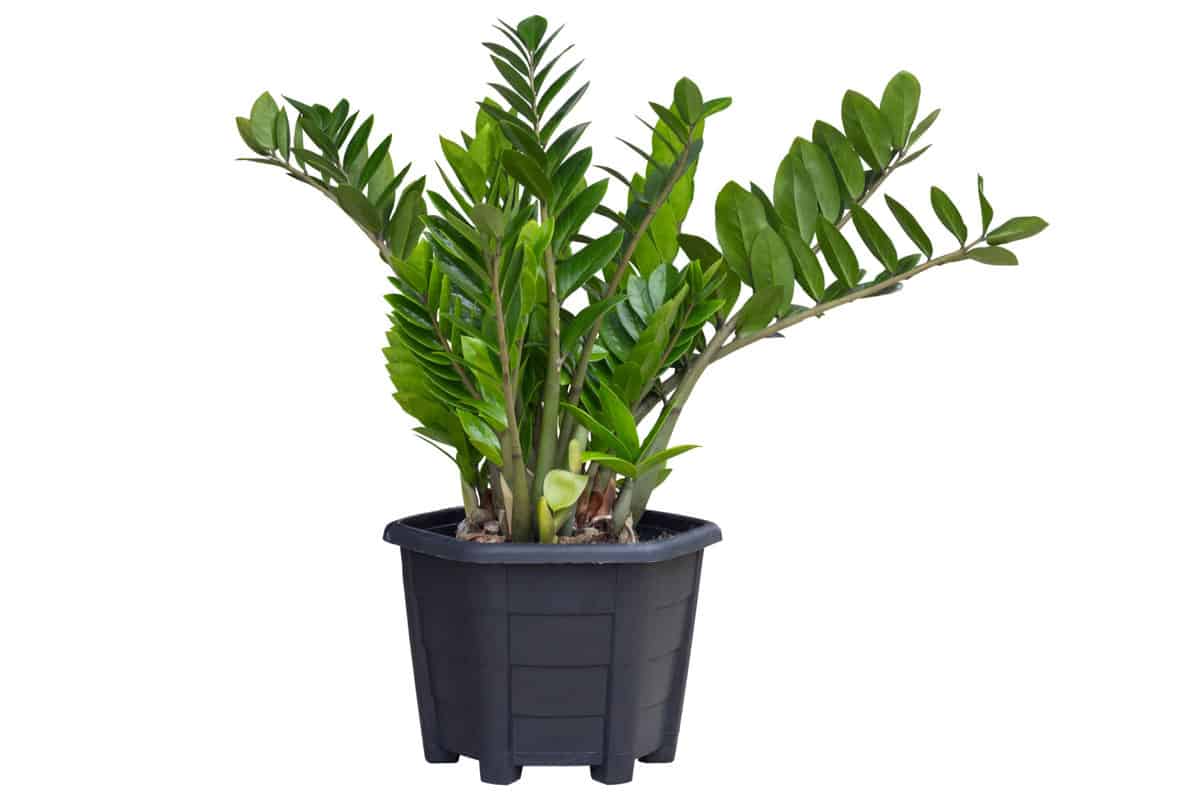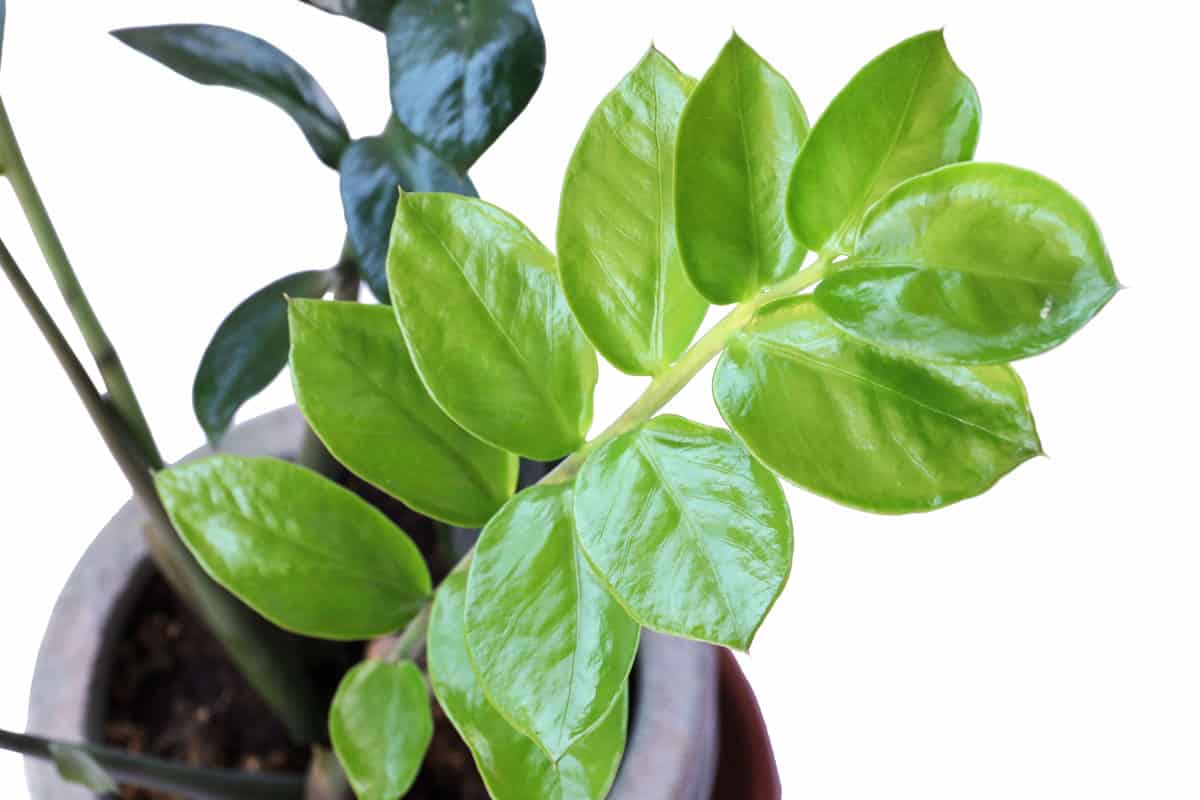Zanzibar gems are beloved indoor plants known for their attractive, glossy foliage and their impressive resilience, making them a great choice for both novice and experienced gardeners.
When it comes to propagation, Zanzibar gems are indeed quite easy to grow. But how do you propagate them? Can it grow from a cutting?
Read on below and let's look at the best propagation methods for Zanzibar gems.

Can Zanzibar Gem Grow From Cutting?
The answer is yes! Zanzibar gem, also known as ZZ plant or Zamioculcas zamiifolia, can indeed be propagated through cuttings.
To successfully propagate your Zanzibar gem, start by selecting a healthy stem with at least two pairs of leaves.
Use a clean and sharp pair of scissors or pruning shears to carefully remove the cutting, taking care not to damage the parent plant.
Make sure to let the cut end dry for a couple of hours before potting it in well-draining soil, and keep the new plant in a bright location with indirect light.
With proper care and a bit of patience, you'll soon see new growth on your cutting, and before you know it, you'll have a thriving Zanzibar gem to enjoy or share with a fellow plant lover.
Steps To Grow Zanzibar Gem From Cuttings
The Zanzibar gem is a popular, low-maintenance houseplant. Its lush, shiny foliage adds a touch of greenery to any indoor space.
This plant is known for its ability to thrive in low-light conditions, making it a great addition to your home or office.

Growing a Zanzibar gem from cuttings is a simple and rewarding process. You can propagate Zanzibar gem by division or leaf cutting.
Here's a step-by-step guide to help you successfully propagate your Zanzibar Gem.
Step 1
Choose a healthy stem or leaf from the plant. Look for a piece with no signs of damage, disease, or pests.
The healthier the cutting, the better your chances of successful propagation.
Step 2
Use a clean, sharp pair of gardening scissors or a knife to make a clean cut just below a node, which is the area where the leaf joins the stem.
A stem cutting about 4-6 inches in length is ideal.
Step 3
Remove the lower leaves from the cutting, making sure to leave at least one or two leaves at the top, as this will help with photosynthesis.
Step 4
Allow the cut end of the stem to dry out for a few hours or up to a day. This helps reduce the risk of rot when the cutting is placed in soil or water.
Step 5
Prepare a rooting media such as vermiculite, perlite, or a moist potting mix.
Step 6
Insert the cut end of the stem into the moist rooting media. Ensure the node is covered with soil, as this is where the new roots will form.
Step 7
Place the cutting in a warm, bright location away from direct sunlight. A spot with bright, indirect light is best for the Zanzibar gem to avoid scalding and browning of leaves.
Step 8
Keep the soil or rooting media moist, but not overly wet. Overwatering can lead to root rot and may prevent successful propagation.
With patience and proper care, your Zanzibar gem cutting should begin to develop roots and new growth within a few weeks to a few months.
Once the new plant has established its root system, you can transplant it into a regular pot with well-draining soil.
Propagation Methods
When it comes to propagating your Zanzibar gem, there are a couple of methods you can use.
In this section, we will discuss two propagation techniques, root division and stem cuttings.

Root Division
One way to propagate your Zanzibar gem is through root division. This method involves carefully separating the root ball of the plant into smaller sections.
Each of the root ball contains a portion of the root system and at least one or two healthy shoots.
To do this, you'll need to:
- Gently remove the plant from its pot and brush away any excess soil from the roots.
- Look for natural divisions within the root ball and use your hands or a clean, sharp knife to carefully separate the sections.
- Plant each divided section into its own pot containing well-draining soil mix.
- Water the newly potted sections and place them in a warm location with bright, indirect light.
The root division method is ideal for Zanzibar gems that have become too large or crowded in their current container, as it not only gives you new plants but also helps rejuvenate and manage the size of the original plant.
Stem Cuttings
Another method you can use for propagating your Zanzibar gem is through stem cuttings.
This involves taking a healthy stem and creating a new plant from it. Here's how you can do it:
- Choose a healthy stem on your Zanzibar gem and make a clean cut at least 4-6 inches long, with several leaves left on the cutting.
- Remove the lower leaves from the cutting, leaving only the top leaves.
- Allow the cutting to air-dry for a day or two to promote callus formation at the cut end.
- Insert the cut end into a pot filled with a moist, well-draining soil or perlite mix.
- Cover the pot with a plastic bag or place it in a humid environment to help maintain humidity around the cutting.
- Place the pot in a warm location with bright, indirect light.
Once the cutting has established a healthy root system, which may take a few weeks to a couple of months, you can transfer the new plant to a larger pot.
Both root division and stem cuttings are effective ways to propagate your Zanzibar gem, so choose the method that best suits your needs and comfort level.
Here's a video of growing roots from cuttings in sand.
Caring Tips For Zanzibar Gem Cuttings
Here are a few friendly tips to help you care for your Zanzibar gem cutting:
1. Choose a Healthy Parent Plant
To ensure your cutting is off to a good start, select a strong and healthy parent plant. Look for vibrant leaves, robust stems, and an overall well-nourished appearance.
2. Take a Clean Cut
When removing a cutting from the parent plant, use a sharp and sterile knife or scissors.
Cut the stem at a 45-degree angle, just below a leaf node. This will promote new root growth and allow for better water intake.
3. Allow the Cutting to Callous
Let the cutting air dry for about 24 hours to allow a callous to form over the cut end. This helps prevent rot and encourages new root growth.
4. Prepare a Suitable Growing Medium
Zanzibar gems thrive in well-draining soil mixes. Use a mix of two parts potting soil, one part perlite or coarse sand, and one part peat moss or coco coir.
This creates an ideal environment for the cutting to develop roots.
5. Place the Cutting in the Growing Medium
Insert the calloused end of the cutting about an inch deep into the prepared soil mix. Be sure to keep the cutting upright and steady.
6. Maintain Proper Light and Temperature
Zanzibar gems prefer bright, indirect light and temperatures between 65-75°F (18-24°C).
Place your cutting in a location with consistent temperature and light conditions, avoiding direct sunlight that can scorch the leaves.
7. Keep the Soil Moist But Not Soggy
During the initial rooting phase, it's essential to keep your Zanzibar gem cutting hydrated.
Water it sparingly but regularly, ensuring the soil remains moist but not waterlogged. Too much moisture can cause root rot.
Remember to be patient, as rooting may take several weeks, but with proper care, your cutting will flourish.
Maintain the Right Environment for a Successful Propagation
Plant propagation can be a fun and rewarding experience, so don't be disheartened if you face challenges initially.
Keep in mind factors like sunlight, water, and temperature, as these will significantly impact the success of your attempts.
Don't hesitate to reach out to fellow plant enthusiasts or online communities for support and guidance.
Comment below and tell us about your successful propagation story techniques.
For more propagation tips, check out these other articles:
How To Propagate In Perlite [Step-By-Step Guide]
How To Harvest Venus Flytrap Seeds [Top Tips For Collection And Propagation]?
